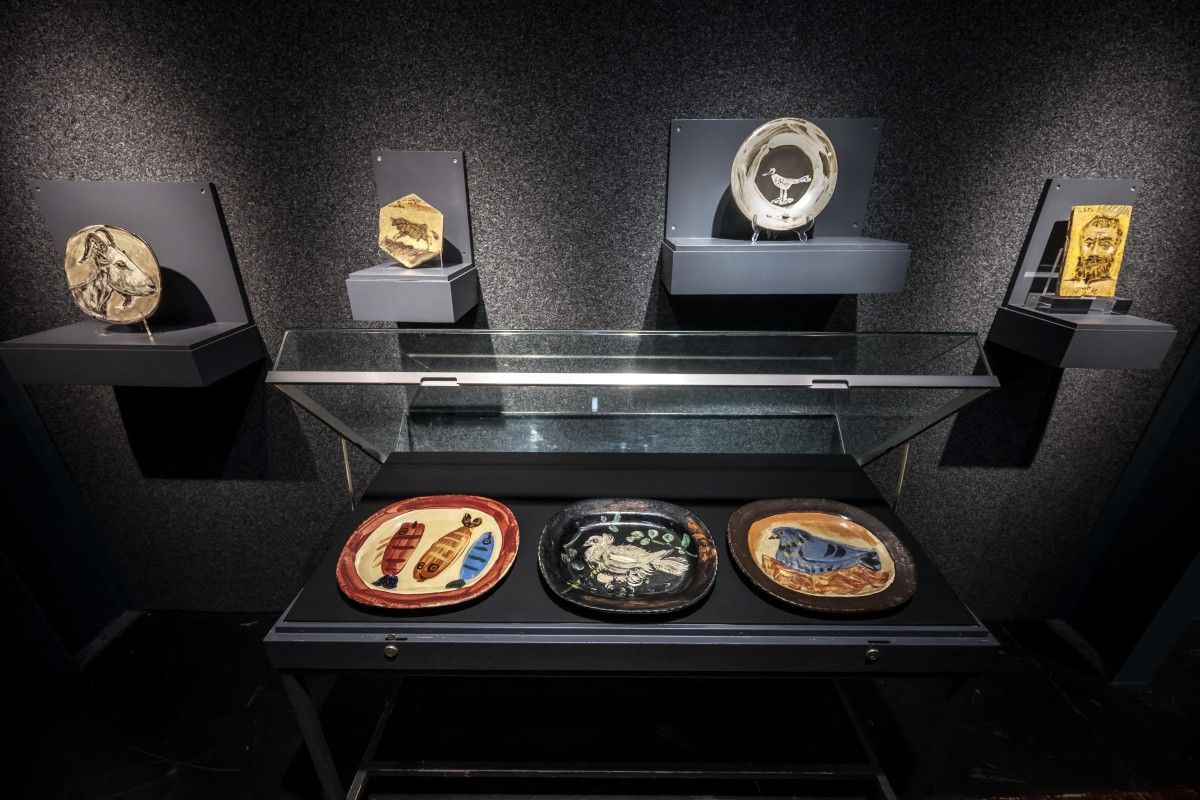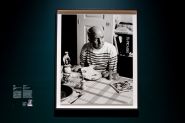
A rare collection of Pablo Picasso’s never-before-seen ceramic plates and dishes will be auctioned in Geneva on June 19. The pieces, part of a long-held private collection, offer a more accessible entry into the legendary artist’s work.
A clutch of one-off and hitherto unseen ceramic plates and dishes by Pablo Picasso are going under the hammer in Geneva on June 19.
Emblematic motifs from Picasso's artistic universe—pigeons, fish, a goat, a bull, and a bird—adorn the colorful plates and dishes.
"It's a truly exceptional collection. The plates and dishes we have here are real Picasso works," Bernard Piguet, director of the Piguet auction house in Geneva, told AFP.
"These unique pieces belonged to Picasso's estate, and in the early 1980s, his heirs gave them to one of their friends," he said.
The close friend, a French art lover whose name has not been revealed, kept them until his death. His heirs have decided to put the ceramics up for sale.
Made between 1947 and 1963 in the Madoura workshop in Vallauris on the southeast French coast, the ceramic artworks are being exhibited to the public for the first time ahead of Thursday's auction.
'Reasonable' prices
The seven pieces are being sold in separate lots.
Two large platters decorated with pigeons are both expected to fetch between 30,000 and 50,000 Swiss francs ($37,000–$61,500).
A third plate depicting three blue, pink, and brick-colored fish on a white background, resembling a child's drawing, is estimated at 20,000 to 30,000 francs.
A thin brick, titled Head of a Bearded Man, painted with ceramic pastels in yellow, white, garnet, brown, blue, orange, and green, carries the same estimate.
Glazed on a painted background in shades of grey, brown, and black, a terracotta plate depicting a goat's head bears the prestigious stamp Original Picasso print on the back. It is valued at 20,000–30,000 francs.
The two other pieces include a bull on a hexagonal terracotta tile (15,000–20,000 francs) and a stylized bird on a plate painted in black and white (15,000–25,000 francs).
"It's a lot," Piguet said of the price. "But don't forget that these are works of art in their own right and unique pieces" without replicas.
"If you step back from Picasso's work and his drawings, which are becoming practically unaffordable today, you have here original works by Picasso that command a reasonable estimate."
New outlet
Picasso was one of the most influential artists of the 20th century. The prolific Spanish painter died in 1973, aged 91.
He created thousands of plates, platters, vases, pitchers, and other earthenware objects at the Madoura ceramics studio, run by pottery couple Georges and Suzanne Ramie.
After World War II, "Picasso was already an internationally renowned artist," said Adeline Bisch Balerna, head of paintings and sculptures at Piguet.
"He had already opened up a huge number of avenues for all artists; the great, well-known works had been created, and he was seeking new means of expression for his art."
Picasso would visit the Madoura studio, meet Georges Ramie, and be "captivated by all the possibilities offered" by this new artistic outlet, she explained.
Piguet is also auctioning two Picasso works "never before seen on the art market" from the same family friend’s collection: Serenade (1919), an Indian ink and watercolor painting estimated at 20,000–30,000 francs, and the pencil drawing Famille balzacienne (1962), valued at 80,000–120,000 francs.
Unseen Klein
Meanwhile, the contemporary art in Thursday's sale includes one of French artist Yves Klein's first blue monochromes, in what is its first appearance on the art market, according to the Piguet auction house.
From 1959, Monochrome bleu sans titre (IKB 328), estimated at 100,000–150,000 francs, is painted in International Klein Blue, the deep blue hue developed by the artist himself.
"In daylight, it really has this luminous blue, this completely fascinating Klein blue. And when you put it indoors, you see it as a dark blue, almost midnight blue," said Bernard Piguet.
Klein died in 1962, aged 34, following a series of heart attacks.
The work comes from the collection of the Swiss artist couple Muriel and Gerald Minkoff, who enjoyed exchanging artworks with fellow contemporaries. It was discovered by their successors in their Geneva apartment, according to Piguet.
By Agnès PEDRERO / AFP


Comments